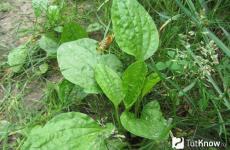DIY beaded parrot in the photo. Macaw parrot and others How to weave a parrot from beads pattern
At the last MC on weaving volumetric beaded animals I told you how to weave.
Today we are weaving a parrot.
To work, you will need a wire 2 meters long and 0.3 mm in diameter. Beads 6 colors (see diagram).

1. We put 3 black beads in the middle of the wire and after 2 we close them into a ring.

2. We continue to weave the parrot’s head according to the pattern. Please note that the first 2 rows are woven flat. This is indicated by the black lines passing after each row. As soon as the volumetric weaving begins, the lines will pass through 2 rows. The diagram on the right shows the colors of beads that were used to weave the bird.
3. The last row of the diagram is the fastening of the wings. Each wing will require additional pieces of wire of approximately 30 - 35 cm.
4. Insert additional pieces of wire, as shown in the diagram, through the last 3 beads of the row. Let's remember at what point are additional wires inserted? Then, when the row is put on, it is threaded through the second end, but not tightened to the end and it can be made even. If the row is tightened, it will be much more difficult to thread the wires.

5. On each of the additional wires, its own wing is woven according to the pattern. Don't forget that the wings are mirrored. When the wing is woven, we secure the ends of the wires along broaches.

6. We continue to weave according to the pattern until the yellow row of 12 beads. We insert another additional wire approximately 30 cm long. Look carefully, the wire is threaded through the 6 central beads of the row.
7. We weave 3 more rows and in the fourth again insert additional wire through the 3 central beads.
8. On each pair of wire ends we make tabs according to the diagram. Weave the fingers on the end that looks forward, the heel on the one that looks back. At the end, carefully twist the ends by about 1 cm and cut them at a distance of 0.5 cm from the beginning of the twist. We bend the end towards the foot.
9. The second leg is woven on the second pair of wires.

Dear bead lovers, today we will tell you how to make a parrot from cockatoo beads. A step-by-step master class with a weaving pattern, photo and description will help us with this. Parrots are amazing birds that not only have an impeccable appearance, but also have the wonderful ability to repeat the voices of people. At the same time, some breeds have a discerning mind and excellent ingenuity.
Tools and materials Time: 3 hours Difficulty: 4/10
- small cockatoo – black, yellow, white beads (2.5 mm diameter), brass wire (0.3 mm diameter);
- large cockatoo – black, yellow wooden beads (4mm in diameter), white regular, wire (0.4mm in diameter);
- kookaburra - black, yellow, brown, turquoise, white, as well as gray colors (2.5 mm diameter), wire (0.3 mm).
Weaving pattern
Handicrafts provide a lot of reasons to give gifts to all your friends and acquaintances. This beaded parrot will not allow you to pass by our master class and not try to create it yourself. This bird can be an excellent keychain or just a souvenir.
You can choose the color scheme of beads based on your own taste. In this case, you will receive a completely original work.

Follow the step-by-step instructions, and assembling one model will take you no more than one hour.
Click on pictures to enlarge!


If you weave a beaded parrot using this weaving pattern, believe me, your children will be delighted! Happy creativity!
A beaded bird can be an excellent interior decoration, toy or talisman. To create it you need a suitable pattern, thin wire, beads of different colors and, of course, your imagination.











DIY green firebird
It is best to make a green firebird using the parallel weaving technique. The essence of this method is simple - we string a bead onto a wire, and first string those beads that will be below onto one end of the wire, and then thread the other through them. Using the same principle, add the remaining rows.
Before weaving a green firebird, it is better to draw a diagram. Outline only the body; all other parts must be made using a different technology. It is better to start creating a green firebird with a beak made of black beads. It should be a thin strip. 
Next, add other rows. You can use beads of light green, emerald, and marsh colors. All shades are either combined in one row, or each row consists of one of them.
The next task is to add the tail and wings. The easiest way would be to make parts of the wings and tail in the form of strips, which need to be fastened together and tied to the body. Considering that the firebird itself will be green, you should use similar shades of beads and combine them with other suitable colors, such as bronze, gold, orange, red, black, brown or yellow.
To make the green firebird as impressive as possible, string contrasting beads onto the ends of the pieces. Remember that there must be one pattern for both wings. 
Bird of happiness made of beads
You can make a bird of happiness using the parallel weaving technique, but in such a way that it is used in the process of making the wings and tail.
First you need to draw a diagram so that it represents both the body and the tail. The tail should be widened downwards. It is better to look for bright colors, for example, orange, blue, light blue, emerald, etc. 
After the body and tail are ready, you need to weave the wings using a parallel technique and wrap them to the base. It is advisable that each wing consist of three parts.
To make the tail of a beaded bird more interesting, you can tie threads of beads and wire to it. 
Stork made of beads
When making this voluminous bird, you can use several techniques at once. It’s easy to make legs - we string red beads onto a thick wire and wrap three small wires with several beads to the bottom. 
When creating the torso and head, you should use a different technique. We string white beads onto a wire, roll them into a ring and create a second row, winding the wire to the previous one after stringing each bead. It’s better to start from the tail, then widen the rings in the body area, and then narrow and lift them up to form the neck and head. The eyes can be glued, and the beak can be created separately and tied on.
The wings are created using the parallel weaving technique. For their base you need white beads, and for the tips - black. Next, we tape them to the body.
Animals made of beads: DIY weaving lessons and patterns (video)
Animals made of beads: DIY weaving lessons and patterns (video)
Small, beautiful animals made of beads are original crafts that are perfect as a small gift or can be a good decor for a room, mobile phone or keys. Such products do not require a lot of financial expenditure, time and skill. For beginner needlewomen, this is a great way to have fun. If you have never done this type of beadwork, it is better to immediately watch a video of such work. 





Selecting materials for beading
What do you need to weave animals?
Almost all beaded animals are made from the same materials.
To make them you need:
- small beads;
- large beads;
- special thread, wire or fishing line;
- scissors;
- accessories;
- scheme.
Regarding the last point, if you have never dealt with such work, then for the first time it is better to choose something simpler. For beginning craftsmen, the simplest crafts that do not require a wide variety of materials are suitable. To learn how to use the diagrams, just follow the drawing and detailed description of the work process.
How to choose beads for weaving animals? There are mainly two types of similar materials sold in the markets - Chinese and Czech beads. The first few are cheaper. But if you want your beaded animals to turn out beautiful, it’s better to go with the second option. Unlike Chinese, Czech has the same size and color of beads. And this guarantees good beading density and a successful combination of shades.
How to choose a thread for weaving animals? The correct choice of such material helps to create a beautiful craft. In this case, it is better to choose fishing line. Its advantage is that such a thread is very strong and practically invisible in the product. Animals made from beads on fishing line turn out to be especially beautiful.
But for beginners it may seem like a rather difficult tool. In order to learn how to weave a fishing line, you need some skills. Therefore, for the first time it is better to choose a special thread or wire. It's easy to work with her. For beaded animals, the main thing is that it is very strong.
Octopus made of beads
To create an animal you will need:
- beads of a suitable color;
- yellow beads;
- wire;
- scissors.
Manufacturing process:

For the craft, cut a wire about 50 centimeters long. We collect 7 beads of the main color and move them to the center;

Next, we continue to weave in a parallel way. We attach the neck and body using this method. We make nine more rows of these;
The octopus is ready!
Beaded parrot
These beaded birds look bright and unusual. The work is not very difficult, the main thing is to understand the most complex processes. 
To make this wonderful bird you will need:
- wire;
- blue beads;
- red beads;
- green beads;
- yellow beads;
- black beads;
- purple beads;
- scissors.
Manufacturing process:

The parrot's head weaves quite easily. The main thing is that the first two rows are flat. Black lines should be made after each tier;

Thus, it is necessary to weave until the yellow row appears.
Beaded lion
We offer you an interesting master class on making a lion from beads. These beaded animals are small in size, but voluminous and beautiful. 
For production you will need:
- wire or fishing line;
- yellow shiny beads;
- orange shiny beads;
- several black beads;
- one pink bead;
- fabric or paper as filler.
Manufacturing process:
To weave a lion, use the most common parallel weaving. It gives the product a special volume. The mane will be made using the needle method. Such beaded animals require quite a lot of skill. Especially in volumetric weaving. Therefore, such crafts are not entirely suitable for beginner needlewomen.

We put 1 orange and five gold on the wire. Be very careful with colors. If you get it wrong, the product won’t work out a bit;














Beaded deer

To work you will need:
- black beads;
- brown shiny beads;
- yellow shiny beads;
- gray shiny beads;
- black beads;
- scissors;
- wire.
Manufacturing process:

We begin making crafts by weaving horns. We string beads onto the middle of a metal thread, as the diagram shows. We continue to work according to the drawing;

At the next stage of beading, we begin making the body. To weave this workpiece, you need to cut a piece of wire about two meters long and thread it through the lower tier of beads on the head;
This article presents beaded animals of small sizes. If you want to make the same animals, but larger, you can use larger beads, or even replace them with beads. But you need to know that the appearance of the craft will also change. When you want to make only some part of the animal longer, for example, the tail of a bird, you can simply add another row of beads in the calculations of the pattern. Volumetric animals made of beads are very interesting crafts. They can not only be a beautiful hobby, but also an excellent gift for a loved one.





